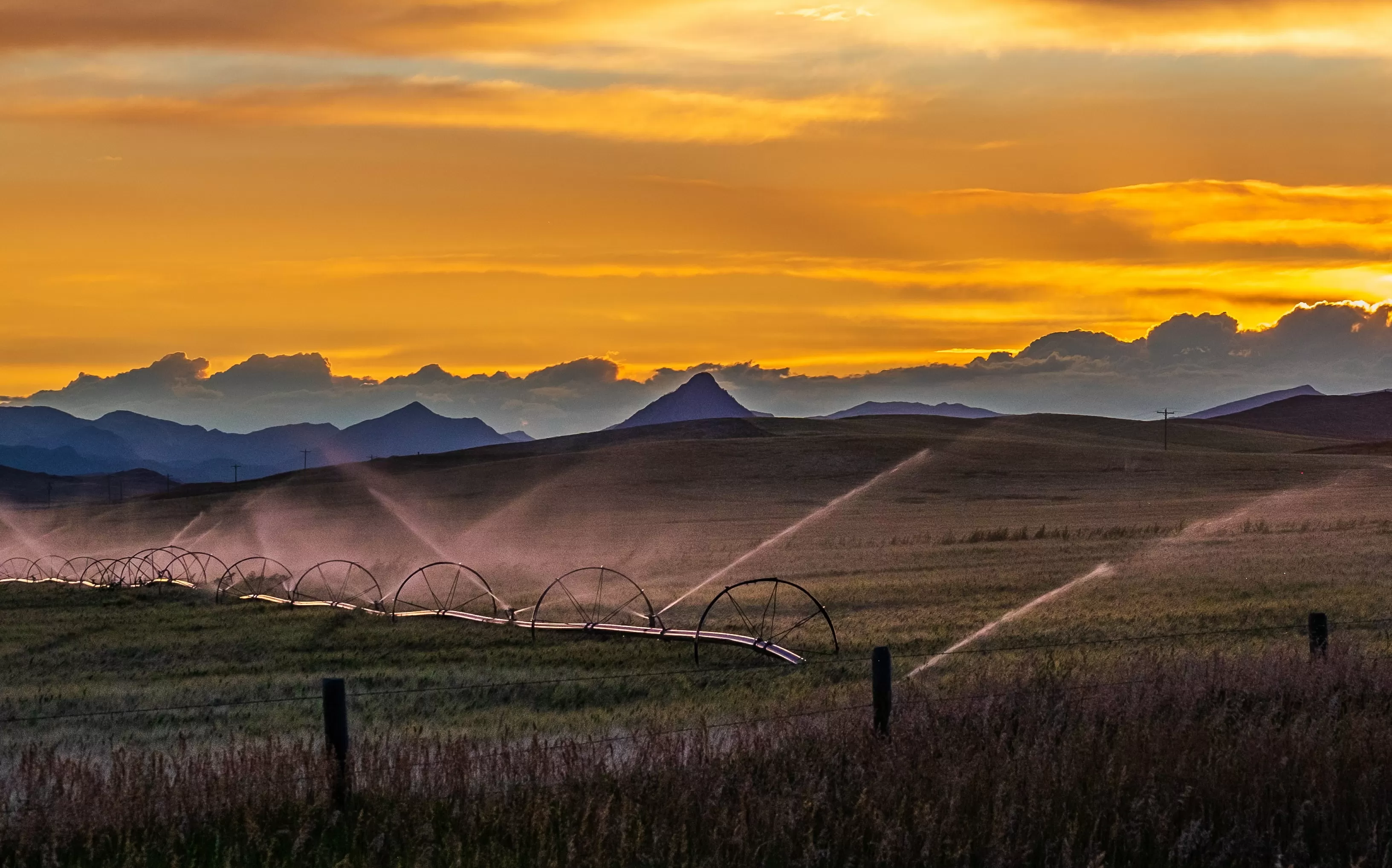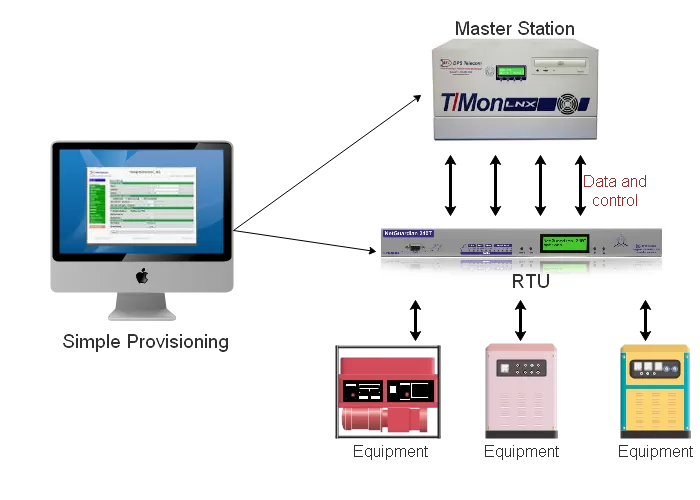Check out our White Paper Series!
A complete library of helpful advice and survival guides for every aspect of system monitoring and control.
1-800-693-0351
Have a specific question? Ask our team of expert engineers and get a specific answer!
Sign up for the next DPS Factory Training!

Whether you're new to our equipment or you've used it for years, DPS factory training is the best way to get more from your monitoring.
Reserve Your Seat TodayIndustrial automation has been making many time-consuming processes easier for companies that previously struggled to maintain their network. This is due to the development and progress of technologies such as computerized sensors and controls. These new technologies have led to the SCADA systems available today.
SCADA systems have the monitoring and control capabilities that introduced a new age in terms of data collection, equipment management and network efficiency.

You can find SCADA applied to many different industries, such as wastewater and natural gas. So, you can take advantage of monitoring and control features for your irrigation system as well. In fact, whether you have a small-scale irrigation system with a single farm or a large-scale one with thousands of acres of crops for commercial use, remote monitoring and control can save you from headaches, lost revenue, and broken equipment.
As a trusted remote monitoring solutions provider, we know just how important it is for you to know what you should expect from your SCADA system. So, let's take a look at how your irrigation system can benefit from SCADA.
First of all, it's important that you understand what exactly SCADA means.
Supervisory Control and Data Acquisition (SCADA) systems involve the communication and control of devices. These systems can be used in multiples types of industries where the need for continuously monitoring is critical, such as utility plants and manufacturing. SCADA systems also allow you to record network data and remote control your gear.
Since its creation SCADA systems have been improved with new technologies in order to ease supervisory processes. Nowadays, it provides multiple benefits for anyone responsible for irrigation systems - from farmers to government agencies.

As you probably know, many irrigation systems are vast and can have hundreds of miles of pipes - depending on the size of the operation. Some systems are located in remote sites that would take technicians hours to travel to for monitoring and maintenance.
Also, it's not hard to find irrigation systems located in areas that go through extreme temperature changes, leaving the systems vulnerable to freezing or extremely hot weather (and the resulting expensive issues). Monitoring and control of irrigation processes are able to avoid these problems while also making sure that your technicians can focus on other tasks.
SCADA technology can be deployed in many different ways when it comes to an automated irrigation system.
First, SCADA devices can sense water levels in the soil and trigger irrigation or even send a "turn off" message to the network.
It can also determine when cold and freezing temperatures will become an issue by automatically calculating wet-bulb temperature. It alerts about potential frosts so you can water your crops before that and consequently save delicate plants.
And lastly, you can use sensors to know not only when to water but also how much water you should use.
An automated irrigation system can be as simple or as complex as the area needs. Very small operations usually require only remote terminal units (RTUs) for their automated irrigation systems.
Large-scale operation, on the other hand, should benefit from the use of a master station as well. Master stations will act as a network operations center (NOC) and will allow you to manage all of your RTUs and remote equipment from only one screen.
Also, a simple open-loop (non-feedback) system sends applicable information to the technician who will set up the desired irrigation schedule. But, closed-loop (feedback control) systems use a defined strategy to irrigate automatically based on information collected from remote sensors.
Irrigation systems use SCADA software to monitor sensors and automate tasks based on wind speed, temperature, soil conditions, and etc. This helps your employees by taking away some of their workload, which allows them to focus on other important work while still making sure that the soil and crops are getting the water and the protection they need.
Remote monitoring of irrigation systems using SCADA gives you many benefits that will ultimately mean big savings of both your time and money.
First of all, SCADA allows you and your technicians to view and control all of your equipment at one time and in one place. Not only do they have to travel from remote site to remote site, but also they don't have to log into multiple different systems to get a real-time view of the irrigation systems.
Second, SCADA helps irrigation system managers solve any issue quickly by simply sending alarms and emergency notifications. You can address some problems immediately if you have the derived control feature on your RTUs. This feature allows you to set pre-programmed rules for each of your control relays, which means that when a specified change of status occurs your RTU will automatically activate a control relay to fix the issue.
And third, SCADA systems ensure that your crops are kept healthy through the use of the right amount of water at all times. The most sophisticated systems will help you reduce the possibility of under-watering or over-watering and can also eliminate fertilizer overflow.
An efficient SCADA system is as competent as its components. With that in mind, it's important that you thoroughly evaluate your options and choose the best fit devices for your scenario. The following are examples of SCADA devices to keep in mind when designing your system.
When designing your SCADA system, your starting point is to choose an advanced RTU. That's important because your RTU will act as a remote site manager that should maintain a strong local network. Essentially, your RTU will be deployed at each of your irrigation sites to monitor your equipment and send alarm notifications to you.

In only one rack-unit package, the NetGuardian 832A is an efficient RTU that has important features to safeguard your system.
With the NetGuardian 832A, you'll be getting 32 discrete alarm inputs. Keep in mind that these inputs allow you to keep an eye on the "on-or-off" type of information, such as if a piece of equipment is on or off. Other than 32 discretes, you'll be getting 8 analog inputs. Analogs are able to tell you "how much" information, such as temperature, fuel levels, battery levels, and etc.
The 832A also gives you the ability to remotely control your irrigation site equipment as it provides you with 8 control relays. With them, you can control, reboot, and turn on or off pretty much anything you like.
Also, the NetGuardian 832A supports 24x7 phone and email notifications. This is a very efficient way to send alarms directly to your maintenance technicians in the field, even if no one is at the office.
If you have a large irrigation system that requires multiple RTUs, the best practice is to deploy a competent master station to integrate all your network in one screen. An example of an efficient master is the T/Mon LNX.
The T/Mon LNX is an industrial-grade, powerful master that is able to provide centralized management for your system. It allows you to choose on-screen display, email alerts, and/or phone alerts when new alarms come in. You can also configure alarm types and severity in order to determine the kind of notification (critical alarms require a more disruptive alert).
Also, T/Mon allows you to keep using your legacy equipment. This master station is compatible with older devices and protocols, allowing you to keep your initial investment and avoiding a complete swap out of your system devices. All of your different equipment will be integrated into T/Mon's interface.
T/Mon's web browser interfaces have a graphical mapping application called GFX. Using GFX, you easily can create layers of maps that will allow you to drill down all the way to a specific device. As a "war-room" view of your irrigation system, alarms will cause your map points to flash and the circle around your points will change color when an alarm comes in. This way you will always know exactly where to send your techs to fix the problems.
Based on what was said previously, we can get to the obvious conclusion that Supervisory Control and Data Acquisition systems are essential in order to save time and money. And this is mainly because they eliminate the necessity to drive from your office to your remote location.
So, independently of the time of the day (or night), you can are able to control your irrigation system with a simple press of a button, ultimately avoiding expensive issues. Also, you can save money by not having to hire as many people to monitor your irrigation system.
If you and your field operators are looking for an efficient way to automate your irrigation system, then you will need a perfect-fit solution and that is what we specialize in. We are a trusted remote monitoring solutions manufacturer and we have more than 30 years of experience enabling companies to access their remote network from anywhere they are. If you need a better way to monitor your irrigation system, then talk to us.

Morgana Siggins
Morgana Siggins is a marketing writer, content creator, and documentation specialist at DPS Telecom. She has created over 200 blog articles and videos sharing her years of experience in the remote monitoring industry.